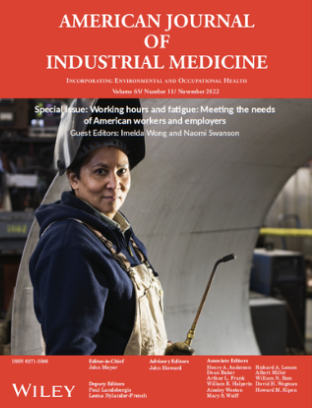Paid Family and Medical Leave
Paid Family and Medical Leave

Paid Family and Medical Leave
Introduction
Paid family and medical leave (PFML) laws allow workers to take extended paid periods off work to meet caregiving obligations or address serious health conditions. Such laws complement but are distinct from paid sick leave laws, which are designed for more acute and short-term needs. Since 1993, the Federal Family and Medical Leave Act (FMLA) has provided job-protected, unpaid caregiving leave to covered workers, but strict eligibility constraints exclude half the workforce and do not provide for paid leave. The result is that the landscape of access to PFML for service sector workers is shaped by a patchwork of state laws and limited voluntary company policies.
The Shift Project’s large sample of hourly service workers collects detailed information on PFML qualifying events, leave use, and worker outcomes, offering unique insight into not only hypothetical access to PFML but also its actual uptake when needed.
PFML is Hard to Access and is Unequally Available
PFML in the service sector is hard to access. Shift Project researchers (2023) found that a minority of respondents who experienced qualifying events that would have merited leave-taking took sufficient leave, and 40 percent took no leave at all but wanted to.
Case study
Table 1. Leave Sufficiency and Compensation Type Amongst Survey Respondents
Julia Goodman and Daniel Schneider. 2023. “Racial/Ethnic and Gender Inequities in the Sufficiency of Paid Leave During the COVID-19 Pandemic: Evidence From the Service Sector.” American Journal of Industrial Medicine 66(11):928–37.
In a Shift Project research brief (2021), we identified several factors that constrained workers’ capacity to take needed leave. As shown below, overall, 70% of workers who did not take any leave or did not take sufficient leave cited economic cost of time off. Large shares of workers also reported fear of losing their jobs (32%) as well as pressure to return to work (26%).
These constraints on leave-taking – from household finances and fear of retaliation – could be lessened by generous PFML policies. But, we found that even when a state does have PFML programs, there is limited awareness among workers of such laws’ existence.
Case study
New Jersey is at the vanguard of providing paid leave benefits in the United States. It offers expanded leave coverage for workers through its Family Leave Insurance program, Temporary Disability Insurance, and the New Jersey Family Leave Act. Yet, in a Shift Project research brief (2022), we found that many workers were unaware of these benefits. This lack of awareness cuts across demographic categories and industries. But, we also see that Hispanic workers are least likely to be aware of the policy, that awareness is especially low among younger workers, and that union members are much more likely to be aware of the NJ PFML law than non-unionized workers.
Figure 1. Respondents That Have Heard of NJ Paid Family Leave Law by Worker Characteristics
Access to PFML in the service sector is unequal. We employed Shift Project data to figure out the size of gender and racial/ethnic gaps in workers’ ability to take leave when needed. In a (2023) paper we showed that women were more likely to take no leave or leave of insufficient length compared to men. We also found that Hispanic and Black workers were more likely to take insufficient or no leave at all, respectively, than White workers.
Workers Who Can Access Sufficient Leave Fare Better
Access to sufficient PFML improves workers’ economic security. Focusing on hourly workers who had experienced a qualifying medical or caregiving event, Shift Project researchers (2021) found that workers who took paid leave reported significantly less difficulty making ends meet and less hunger hardship than those who had similar serious health or caregiving needs but did not take paid leave. Workers who took leave were also less likely to report utility payment hardship than comparable workers who did not take leave.
Shift Project researchers (2021) found that among workers who were unsatisfied with their leave situation, 34% said they have gone hungry, 33% have deferred medical care, 42% have difficulty paying utility bills, 16% have doubled up with family to save on housing, and 7% have stayed in a shelter or other non-regular housing in the past 12 months.
Figure 2. Hardship Measures by Satisfactory/Unsatisfactory Leave Experience
Access to sufficient PFML improves workers’ well-being. The benefits of being able to take paid leave extend beyond reduced economic hardship. Workers who take paid leave report better sleep quality than those who have similar serious health or caregiving needs but did not take paid leave; 33% of those who took paid leave describe their sleep as “good” or “very good,” as opposed to just 24% of those who did not take leave. Workers who take paid leave are also more likely to report being very or pretty happy (73%) than comparable workers who do not take leave (62%). Taking unpaid leave, in contrast, is not associated with better sleep or happiness outcomes relative to not taking leave at all.
Figure 3: Association Between Paid Leave and Economic Security/Wellbeing





